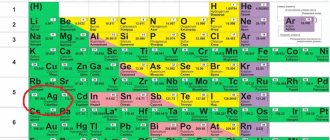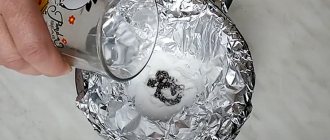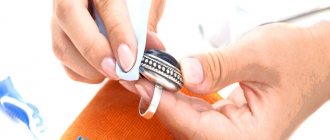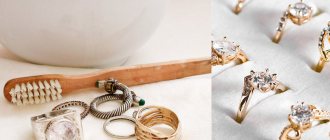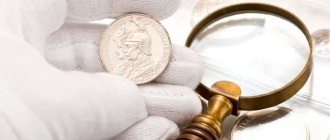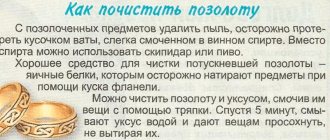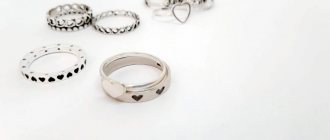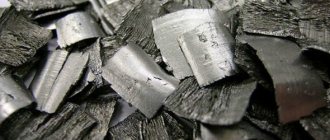July 26, 2020
Many radio components contain precious metals, among which a significant portion of silver can be found. In many of them it is present in the idea of an alloy, and in some it is even present in its pure form. This precious metal is a fairly ductile and malleable material. To extract silver from radio components, you must have the appropriate knowledge and associated containers and tools.
At home, it is highly not recommended to engage in independent silver extraction, since this entails liability before the law. If you have unnecessary old radio components at home, it is better to sell them. You can easily hand over radio components in the Kaluga region. Our purchase offers each client favorable conditions.
How to remove silver from contacts: various ways to obtain the precious metal
Over the past decades, the rapid development of the electronics industry has led to a decrease in the use of precious metals in the production of components and semiconductors.
However, during the existence of the USSR, precious metals were one of the main and extremely important components of manufactured radio electronics.
There is a specialized reference book for the content of precious metals, from which you can find out the list of precious elements that make up a particular electronics component.
The most common noble metal in radio components is technical silver. It is pure metal with minor impurities or no impurities at all.
Thus, technical silver is almost always a high-grade metal of 999 purity. In this article we will tell you where it is found and how to remove this metal from the contacts and separate it from the copper at home.
Treatment with nitric acid and copper
For this process, you need to mix 8% acid with distilled water in a 1:1 ratio. The amount of this solution is prepared at the rate of 1 liter per 50 g of silver. Next, silver is dissolved in this liquid. After the silver is completely dissolved, copper is added to the solution in the form of copper tubes to obtain the so-called “silver cement”.
This process is that copper, reacting, collects silver on its surface. This will be the “silver cement”, which must be periodically shaken off the tubes so that the reaction does not slow down. Once the reaction is complete, the silver cement will settle at the bottom. Next, all that remains is to filter the solution through coffee filters and evaporate the filtered substance, after which the dry silver powder is fused using a gas burner.
Where is this precious metal found?
For precious elements in electronics, properties such as thermal and electrical conductivity, as well as light reflection, play an important role.
Thus, noble metals are used in the following radio components:
- Microcircuits . The most promising options for metal mining are Soviet-made microcircuits. It is preferable to disassemble microcircuits of the 564, 530, 133, 134, 142, 155 and 1533 series.
- Capacitors . In addition to silver, palladium, platinum and gold can also be found here. The volume of certain metals depends on the type of case (ceramic, yellow, silver and tantalum), as well as on the year of manufacture of the devices. These components were used in various computers, electronic devices and automatic telephone exchanges, as well as in tube televisions and tape recorders.
- Resistors . The basis of these radio-electronic elements is silver. The most cost-effective components are resistors of the PTP, PPBL, PPML and 5K series. It is recommended to collect Soviet resistors produced before 1982. The key difference between this component is the diamond-shaped marking.
- Connectors . These devices, both Soviet and foreign made, are suitable for extracting silver, technical gold and other precious metals. However, the content of precious metals in foreign-made components will be approximately five times lower.
- Transistors . Another electronics component containing a relatively large number of noble elements. The most preferred for silver mining are transistors with the index 2T935A, 2T944A, 2T945A and 2T998A.
In addition to the above radio-electronic components, technical silver may be contained in:
- generator lamps;
- LEDs;
- switches;
- buttons.
An easy way to remove gold plating using hydrogen peroxide
I want to tell you about one accessible and cheap way to remove gold plating. It is great for etching boards, processors, watch cases, etc. The cost of the necessary components does not exceed 100 rubles.
This method can be carried out at home if you have a good hood, but it is better outdoors. Despite the seemingly harmless components, one should not forget about safety measures. Namely rubber gloves and glasses.
So, what do we need:
- Regular table salt, preferably finely ground (not iodized)
- Vinegar 6 or 9 percent. (can be replaced with citric acid)
- Hydrogen peroxide 3%
- Two glass or plastic containers (size depends on the amount of solution being prepared)
- Filter cloth (I use coffee machine filters)
How to obtain silver from radio components at home?
Silver is a highly inert metal, which means that this element has weak reaction-chemical properties. In other words, it is not easily dissolved.
Under normal conditions, silver does not dissolve in hydrochloric and sulfuric acids, as well as in aqua regia , like gold.
However, this metal has good solubility in oxygen-containing nitric acid.
The answers to the questions of how to isolate, smelt or otherwise extract technical silver from radio components come down to three main methods :
- Mechanical processing is the simplest method, suitable for some types of contacts that can be easily separated using pliers and wire cutters.
- Heat treatment - in cases where it is not possible to extract silver mechanically, there is an option to resort to using a gas blowtorch. When the heat is high, the silver elements can be easily separated from the holder using available means.
- Treatment with nitric acid - this method is used to extract precious metals from massive parts of radio-electronic parts. The method requires high care and accuracy at each stage of processing.
Heat treatment
Smelting is suitable for extracting precious metal from silver contacts where the silver is soldered onto the contact holder.
The tools you need to use are a gas torch or cutter, as well as a knife with a wooden handle .
What is the essence of refining?
The word "refining" means purification or refining. In metallurgical production, refining means the purification of a metal from foreign impurities. Many methods require industrial conditions, while some are suitable for independent use.
There are two main types of refining: chemical and electrolysis. In the first case, special reagents are added to the feedstock to dissolve impurities or convert them into gas. As a result of this operation, the valuable metal precipitates and is filtered out. Electrolysis uses a direct electric current that is passed through a solution of electrolytes. Under its influence, the pure metal ions contained in the solution are deposited on the cathode.
Sales of the resulting metal raw materials and its average price per gram
For the subsequent sale of precious metal from contacts, you need to know its resulting mass and sample. As mentioned earlier, technical silver used in radio electronics is a pure metal of 999 purity.
Accordingly, metal obtained mechanically or by smelting will be 999 fine. If silver was extracted chemically using nitric acid, the output would be a metal of approximately 980 fineness. This is due to the copper impurities present in silver.
The direct cost will depend on two main factors :
- percentage of pure silver in the resulting alloy;
- places of sale of precious metals.
For 2021, the price for 1 gram of technical silver scrap is as follows :
- sample 999 – from 24 to 35 rubles;
- 980 – from 21 to 27 rubles;
- 960 – from 16 to 22 rubles;
- 925 – from 9 to 11 rubles.
When selling more than 1 kg of precious metal, you can earn 2-4 rubles more for each gram of it.
It is also most likely that on the Internet, using thematic sites and forums, you can find buyers who are ready to offer a higher price for those. silver from contacts than from a pawn shop.
Platinum extraction
Instructions for extracting platinum from raw materials:
- removal of base metals (soak for 10 minutes in a 20% solution of hydrochloric acid heated to 50°C);
- dissolution (fresh hydrochloric acid is added to the filtered metal powder and kept for 12 minutes at a temperature of 80°C, then a solution of nitric acid is added dropwise until the solution turns yellow);
- precipitation (after 12 hours, ammonium chloride solution is gradually added to the reddish solution);
- obtaining a platinum sponge (the resulting mixture is filtered to separate the yellow precipitate of ammonium hexachloroplatinate, which is additionally washed with a urea solution and dried for 2 days in the sun or a radiator, and then calcined to obtain spongy platinum);
- melting of raw materials (the spongy mass is placed in a heat-resistant crucible and heated with a gas burner until melted).
Silver contacts: how to remove?
Many people still keep radio components from the USSR era in their homes. They contain silver contacts that can be removed at home. To obtain precious metal, you will need to study the procedure and prepare special items.
Getting gold
The algorithm for purifying this precious metal using reagents – chemically – is as follows:
- In a special container, you need to mix 1 liter of sulfuric acid with a density of 1.8 g/cm 2 and 250 ml of hydrochloric acid with a density of 1.19 g/cm 2.
- We heat the resulting composition to a temperature of 60 - 70 degrees.
- We lower prepared elements into the heated solution - with a minimum amount of impurities. Thus, reagents will be used economically.
- After immersing the raw material, add nitric acid , obtaining a mixture called “aqua regia.” Proportion of the new solution: 3 parts hydrochloric acid and 1 part nitric acid.
Gold settles in small particles that cannot be detected with the naked eye. By adding hydrazine at the rate of 1 ml/100 ml of aqua regia solution, we start the process of precipitation of the yellow metal.
The precipitation procedure will take approximately 4 hours, during which the mixture must be stirred periodically.
At the end, we filter the solution through a dense filter, melt the sediment under a layer of borax in a crucible at a temperature of 1100. The resulting gold is separated from the borax.
Peculiarities
Contacts of electrical components may contain pure silver. There are several types of connections.
- Those that are not magnetic . The silver content in this group is the highest.
- Magnetizable . They contain the least amount of pure metals.
- Copper . Soldering is a copper plate that is coated with a small layer of silver.
Silver contacts are used in low power devices. Pure metal can be extracted from:
- electromagnetic starters;
- electric machines;
- relay;
- temperature sensors;
- silver-zinc batteries.
Rules of care
You need to keep an eye on the silver contacts. Care involves periodically checking their condition. If they are dirty, you should clean them with a suede or cloth cloth . It will need to be moistened a little in gasoline. Can be cleaned with a stiff hair brush.
How to separate silver?
It has long been practiced to extract pure silver from contact alloys. To extract pure metal, special purification techniques called refining are required. This procedure is divided into several steps, the result of which is always the release of silver.
Although refining is an industrial procedure, you can solder the precious metal yourself at home. There are different ways.
Cupellation
Silver can be separated from low-grade alloys through cupellation. This method is based on the ability of molten silver and lead to begin to oxidize in air. With such contact, the metal will separate. To work, you will need a special furnace equipped with a bowl-shaped crucible. The bowl should have a marl coating based on porous limestone clay.
The process is divided into several stages:
- the oven is heating up;
- then an assay crucible is placed in it, which already contains technical silver and lead;
- heat the crucible until complete melting occurs;
- After this, air masses are released into the furnace.
The process includes a thermal reaction. When it runs out, you can remove the crucible and pour its contents into molds.
After cooling, the alloy takes on a rainbow color scheme. This indicates that, in addition to silver, it contains other precious metals.
Electrolytic method
To extract metal in this way, you will need special plastic or sandstone cells with silver nitrate. The precious metal content in the liquid is at least 50 g/liter. Contaminated silver will be used as the anode. The cathode in this situation is stainless steel, cut into strips of small thickness.
The anodes are placed in textile bags. These bags will then collect contaminated silver particles that were unable to dissolve. Silver macrocrystals will be deposited in the cathodes. They will grow towards the opposite pole until a short circuit occurs. To prevent a short circuit from happening, the branches of the crystals are broken during mixing of the solution . Such crystals independently settle to the bottom, from where they are removed. Ingots can be smelted directly from these components.
Branch options
Completely immerse the product in nitric acid solution (10%). The product should completely dissolve and you will get a solution of copper and silver grains. Further, the separation process is more than simple: evaporate this solution, wait until the resulting powder cools and dissolve it in distilled water. You should then have a solution containing silver nitrates. You need to collect them from the sediment.
Another way to separate silver
Fill the product again with a solution of nitric acid and add hydrochloric acid. Then the silver chloride must be washed with water, and then it can be restored using dilute hydrochloric acid and zinc.

